The Advantages of Heating with a Wood Stove
- October 25, 2023
- 8 comment
The allure of a crackling fire, the warmth it radiates, and the rustic ambiance it creates are just the tip of the iceberg when it comes to the benefits of heating with a wood stove. With the rising costs of energy and an increasing interest in sustainable living, many homeowners are turning to wood stoves as a primary or supplementary heating source. This article delves into the numerous advantages of this age-old heating method.

Numerous compelling benefits come with the use of a wood-burning stove in your household. In ancient civilizations, it represented the primary means of heating residences, and to this day, many individuals opt for a wood-burning stove as an effective supplementary heating method for their homes. Below, we delve into some of the key advantages of incorporating a wood-burning stove into your home.
The Advantages of Heating with a Wood Stove List:
- Environmental Impact
- Cost-Effective Heating
- Sustainable and Renewable Energy Source
- Consistent Heat Supply
- Improved Indoor Air Quality
- Ambiance and Aesthetics
- Dual-Purpose Heating and Cooking
1. Environmental Impact
For those of us concerned about our environmental footprint, wood stoves represent a genuinely green heating option. I was delighted to discover that, when used responsibly, wood stoves can have a lower impact on the environment compared to fossil fuel-based heating systems.
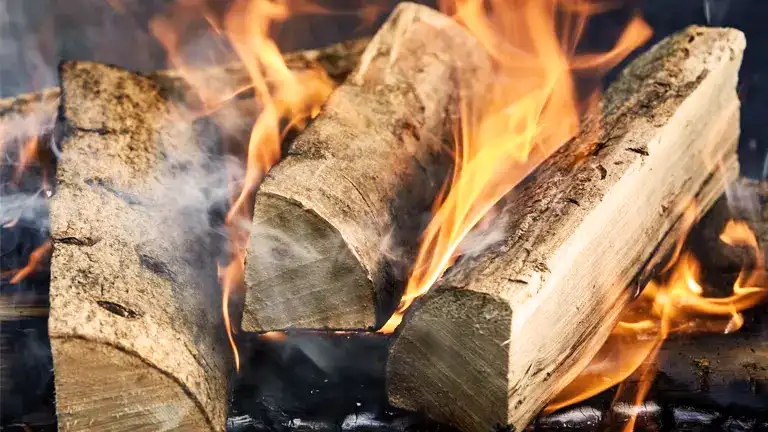
By opting for seasoned, sustainably sourced firewood, you can significantly reduce your carbon footprint, all while enjoying the warmth of a wood fire. The Wood Stove I selected is EPA-certified, meeting stringent emissions standards. This certification assures me that I’m not only keeping my home warm but also doing so in an eco-friendly manner, contributing to a cleaner environment.
2. Cost Effective Heating
The financial benefits of using a wood stove are manifold. While there is an initial investment involved in purchasing and installing a wood stove, the long-term savings can be substantial. Wood, especially when sourced locally or even harvested from one’s own property, can often be a cheaper fuel source than other conventional methods like electricity, gas, or oil.
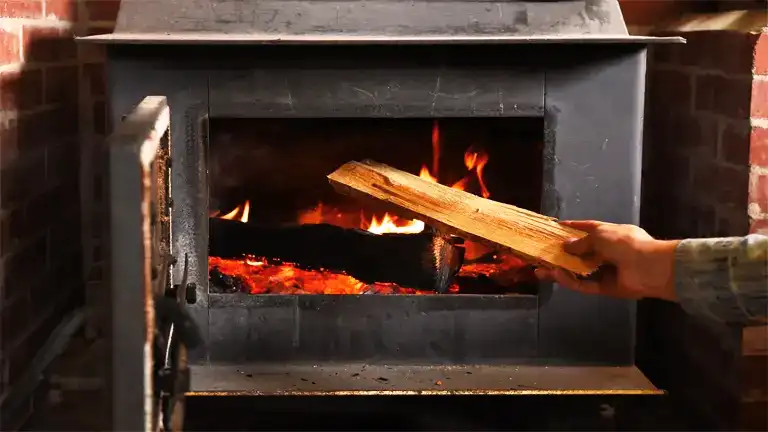
Furthermore, utilizing a wood stove provides homeowners with a degree of independence from utility companies. This autonomy means avoiding unexpected price hikes or interruptions in service, especially during peak winter months when demand is high.
3. Sustainable and Renewable Energy Source
Environmental consciousness is at the forefront of many homeowners’ minds. Wood stands out as a carbon-neutral fuel source. This means that trees, during their growth, absorb carbon dioxide, and when they’re burned, they release the same amount back, ensuring a balanced cycle.

In addition to this, sourcing wood locally not only supports regional economies but also minimizes the environmental footprint associated with transporting fuel over long distances.
4. Consistent Heat Supply
There’s a distinct advantage in the consistency of warmth that a wood stove offers. Unlike heating systems that produce short and sometimes uneven bursts of heat, wood stoves ensure a steady and prolonged warmth, thanks to wood’s slow-burning nature.
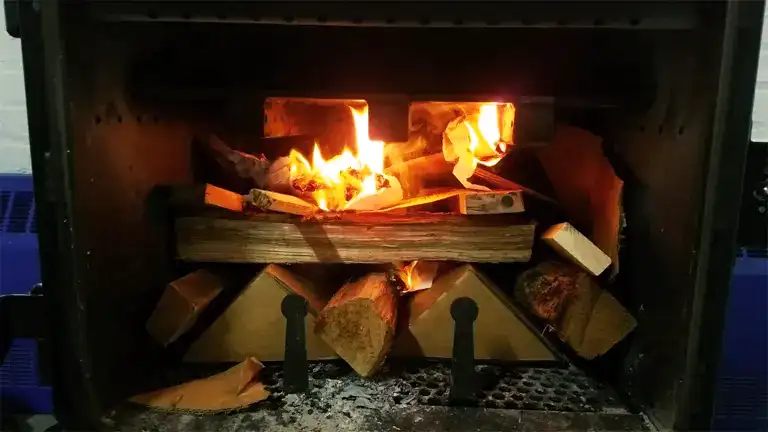
This consistent heat becomes even more valuable in areas prone to power outages. During winter storms or unexpected power cuts, families can remain warm and secure, knowing their wood stove will function regardless of external conditions.
5. Improved Indoor Air Quality
Indoor air quality can significantly impact health and comfort. Central heating systems, while efficient, often circulate dust, allergens, and other airborne irritants throughout the home. A wood stove, on the other hand, minimizes the spread of these particles.
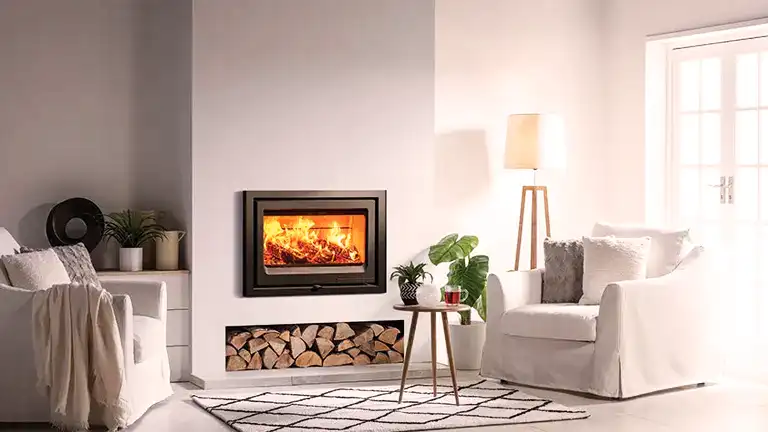
Moreover, the heat produced by wood stoves introduces a certain level of moisture to the indoor air, counteracting the excessive dryness that often plagues homes during the colder months.
6. Ambiance and Aesthetics
Beyond the tangible benefits, there’s an undeniable charm associated with wood stoves. The flickering flames, soft glow, and even the rhythmic sound of crackling wood create a cozy, inviting atmosphere that’s challenging to replicate with other heating sources.
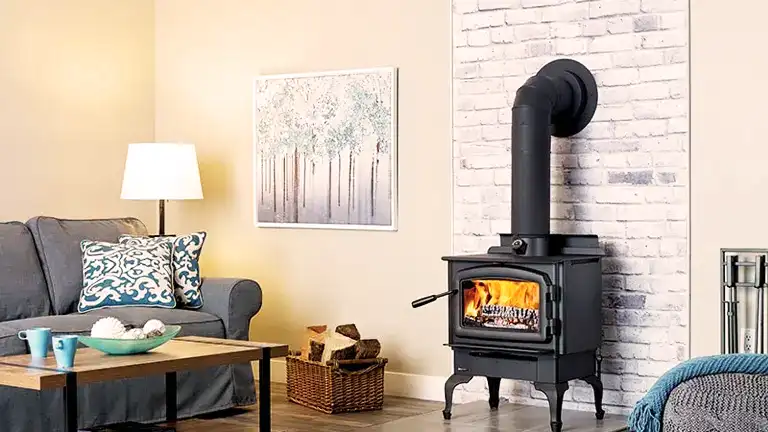
Modern advancements have also led to a variety of wood stove designs. Whether one prefers a traditional look or a contemporary design, there’s likely a wood stove that fits perfectly with their home’s aesthetic.
7. Dual-Purpose Heating and Cooking
Some wood stoves offer more than just warmth. Designs with a flat top can double up as a cooking surface. This feature not only offers a unique culinary experience, reminiscent of old-world cooking, but also becomes invaluable during prolonged power outages, ensuring families have a means to prepare hot meals.
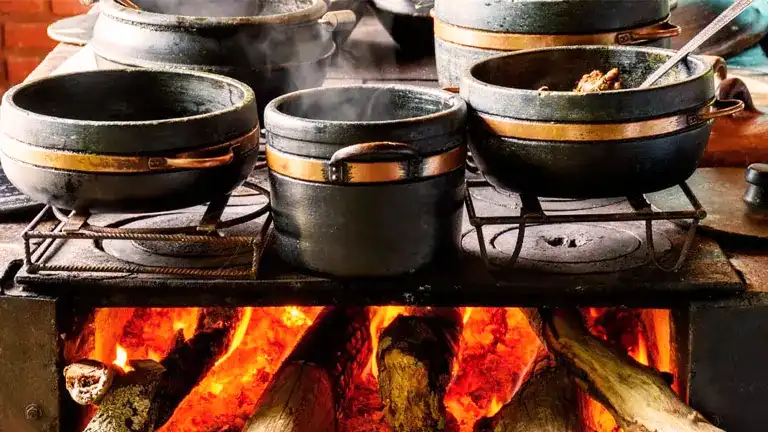
The Advantages of Wood Burners Encompass
- Effective Heat Output: Wood burners excel in generating substantial heat, rapidly and efficiently warming up the space they occupy. They come in various sizes, each offering different levels of heat output. It’s crucial to select a model that aligns with the dimensions of your home or the specific area it’s intended for.
- Creates a Cozy Atmosphere: During gloomy, inclement weather, a wood-burning stove brings about a warm, snug atmosphere, blending generous warmth with the mesmerizing allure of flickering flames. Installing a wood burner can significantly enhance the homeliness and comfort of your living space.
- Energy Efficiency: Wood burners are highly energy-efficient. Modern, high-efficiency wood burners can reach efficiency levels of 70-80% or even more, a stark contrast to the meager 25% efficiency typical of open fires.
- Cost Savings: With the ever-increasing costs of conventional energy sources like electricity, oil, and gas, many individuals find it financially burdensome to heat their homes. Wood burners offer cost savings, given their efficiency, and the affordability of wood, especially in regions with accessible wood resources.
- Reliable, Durable, and Off-Grid: Wood burners epitomize reliability since they operate independently of electricity, oil, or gas. Even during power outages when other heating methods may falter, a wood-burning stove can reliably maintain warmth. They feature a straightforward, robust design with minimal moving components, translating to longevity and minimal maintenance requirements, ensuring decades of dependable service when used correctly.
Environmentally Responsible
Wood represents an environmentally friendly energy source, particularly when managed sustainably. When burned, wood emits carbon dioxide, but this is offset by the fact that a replacement tree absorbs carbon dioxide and releases oxygen, resulting in a carbon-neutral cycle. Furthermore, wood is a renewable resource, unlike fossil fuels, and trees offer vital ecosystem services such as flood control, soil stabilization, riparian management, and habitat for diverse flora and fauna.
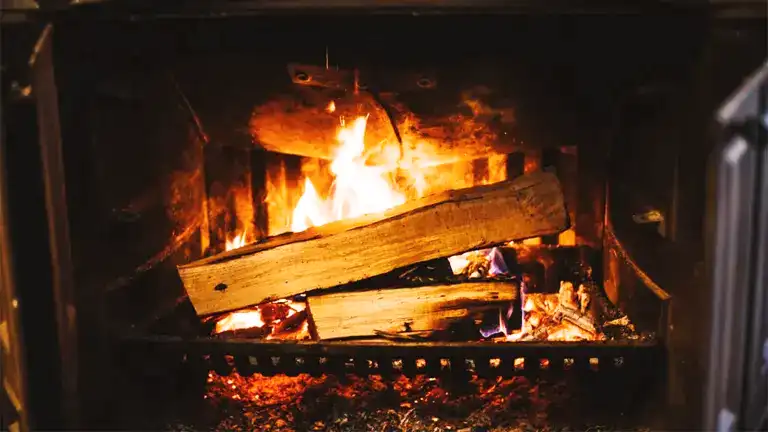
Opting for wood fuel derived from waste, such as offcuts or unused timber pieces from lumber suppliers, is a commendable practice for the environment. It not only diverts waste wood from ending up in landfills but also safeguards other trees from being felled unnecessarily. Additionally, the sourcing of wood is typically localized, often within a 100-kilometer radius, whereas fossil fuels may traverse thousands of kilometers from their point of origin, making wood a more sustainable and eco-conscious choice.
Pros and Cons Heating with a Wood Stove
Pros
- Wood stoves are highly efficient, with many modern models boasting efficiency ratings of 70-80% or even higher. This means they convert a significant portion of the wood’s energy into heat, resulting in substantial fuel cost savings.
- Wood stoves can be eco-friendly when responsibly managed. Using sustainably sourced firewood and adhering to proper burning practices can help reduce your carbon footprint. Wood is considered a renewable resource, making it a greener option compared to fossil fuels.
- Wood stoves are renowned for their ability to produce ample heat. They often come in various sizes and with different heat outputs, making them suitable for both small and large spaces. The heat they generate is distributed evenly, ensuring a warm and cozy atmosphere.
- Beyond their heating capabilities, wood stoves add a cozy and inviting ambiance to any room. The sight of dancing flames and the radiant warmth they provide create a unique and comforting atmosphere, which electric or gas heating systems cannot replicate.
- Firewood is often readily available, and if you have access to a wood source, it can be an economical fuel option. Using wood as a heat source can lead to significant cost savings, particularly in areas with abundant wood resources.
Cons
- Wood stoves require consistent maintenance. This includes cleaning the chimney to prevent creosote buildup, which can pose a fire hazard, and disposing of ashes. Neglecting these maintenance tasks can lead to reduced efficiency and safety concerns.
- While wood stoves can be cost-effective in the long run, the upfront costs of purchasing and installing a wood stove can be significant. This includes the cost of the stove itself, installation materials, and labor if you hire a professional.
- Using a wood stove means relying on a steady supply of firewood, which may not be readily available in all locations. This reliance on a consistent wood source can be a drawback if your supply is interrupted or if obtaining firewood becomes inconvenient.
Conclusion
In an era where sustainability, self-reliance, and comfort are paramount, wood stoves emerge as a compelling choice for homeowners. Beyond the evident practical and economic benefits, there’s a deep-rooted charm to wood heating. It’s a connection to nature, a nod to simpler times, and the sheer joy of watching logs transform into mesmerizing flames. As the world continues its shift towards more sustainable living solutions, the wood stove stands tall, a testament to its timeless appeal.
FAQs
- Are wood stoves really eco-friendly?
Wood stoves can be eco-friendly when sustainably managed and when using seasoned, responsibly sourced firewood. They are a carbon-neutral heating option if used correctly. - How do wood stoves compare to other heating methods in terms of cost?
Wood stoves can be cost-effective due to the affordability of wood, especially if you have access to a free or inexpensive wood source. However, initial installation costs and ongoing maintenance should also be considered. - Are wood stoves as efficient as other heating systems?
Modern wood stoves can be highly efficient, with some models reaching 70-80% efficiency or more. This can compare favorably with other heating methods. - Can a wood stove really heat an entire home effectively?
Wood stoves come in various sizes with different heat outputs. Choosing the right size and placement can effectively heat most homes, from small spaces to larger areas. - Are there any safety concerns associated with wood stoves?
Yes, there are safety considerations, such as proper installation, chimney maintenance, and safe wood storage. It’s important to follow safety guidelines and local regulations. - Do wood stoves require a lot of maintenance?
Wood stoves do require some maintenance, including cleaning the chimney and disposing of ashes. However, modern models are designed to be relatively low-maintenance. - What’s the environmental impact of using a wood stove?
When using responsibly sourced wood, wood stoves have a lower carbon footprint compared to fossil fuel-based heating methods. They are considered a greener option. - Can I cook on a wood stove?
Yes, some wood stoves are designed to double as cook stoves, allowing you to prepare meals while heating your home. - How often do I need to refuel a wood stove?
The frequency of refueling depends on the size of the stove, the type of wood used, and the desired heat output. Some wood stoves have larger fireboxes, reducing the need for frequent refueling. - Are there any government incentives or rebates for using wood stoves?
In some regions, there may be incentives or rebates for choosing environmentally friendly heating options like wood stoves. It’s advisable to check with local authorities or energy programs for potential benefits.
We’d greatly appreciate your input! Feel free to share your personal experiences and thoughts regarding wood stoves in the comments section below. Your valuable insights can be a guiding light for others in their quest for the perfect heating solution!

Edward Smith
Forestry AuthorWoodworking is about more than crafting; it's a harmonious connection with nature, mastering tools, and preserving our environment. I'm here to share my knowledge and experiences with you, forging a future where we can embrace wood's beauty and utility while safeguarding our forests' health and diversity.
8 comments
My Wife and I have enjoyed the benefits a Woodburner gives, over many years. The warmth and glow is difficult to replicate on a cold winter's day. Preparation is key before the winter months. I am lucky in having an outside chimney and flue, which I can rod (clean) from within the burner and externally up and down the flu. Having replaced the firebox bricks, door rope seal and given the burner a good lick of heat resistant mat black paint, we are ready for some warm winter days. Foreward maintenance is key to a trouble free experience, not forgetting to be careful to burn good seasoned timber and checking your that your Carbon Monoxide alarm meter is working, that could save your life.
Bill
October 29, 2023 12:50 pmJust to point out ..it's AMBIENCE!
Lesley
October 29, 2023 11:50 amHad Woodburner in 12 years ,only burn good dry kilned logs can only say how good they are ,and burn smokeless nuggets keep it clean and well swept each year will have no problems
Edward Downard
October 28, 2023 7:51 amSadly Woodburning is cancerous. We should warm people about this. It's highly toxic to the body. Like smoking 25 sigarets an hour.
Stella
October 27, 2023 11:40 amI had my first multi fuel log burner put in four years ago, my second one fitted this year. Both brilliant, I love them, warm house including upstairs. They are so cosy and much nicer to watch than any TV. Yes initially expensive install and to buy a descent stove isn't cheap but in my opinion worth every penny.
Jayne
October 27, 2023 12:50 amI was considering a pellet stove on main floor and a wood burning stove in the basement. Thoughts
Edward Meador
October 25, 2023 4:11 pmI've heard a lot of buyer remorse over pellet stoves, primarily because wood pellets pricing varies and can become very expensive -- or more simply, they don't grow in your backyard. I heat primarily with wood from my own trees, which takes some worthwhile effort. But this blog is a bit pollyanish. Even with a modern catalytic combustor that works well one up to temperature, there are many situations in which it is easy to pollute your indoor air quality. For most people, it is more likely that we have worse indoor air quality rather than better when heating with wood. I run large air filters to compensate. Yes, wood is good when the electricity is out. But many wood stoves are only effective at heating larger spaces through electrical fans. It's usually not a big deal to power these with a small battery bank, as they don't draw much juice, but it does require a bit of forethought. If you have access to your own firewood or can get it by sweat equity,













Spiders. They sleep in the wood stacks and come alive in the warmth of indoors. It's why I switched to pellets.
Scott
October 31, 2023 8:26 pm